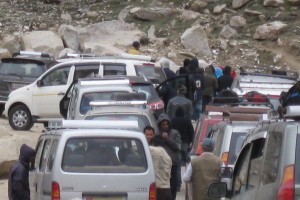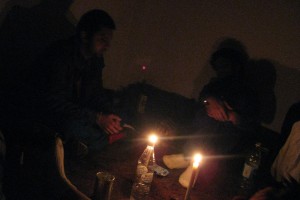By Regina Quadir
Power outages and traffic jams are not unusual for India. But never before has half the country lost power all at once. Yesterday’s blackout in India was the worst electrical blackout in history, leaving 670 million people without power for about 15 hours.
On Monday the first power grid failure occurred, disrupting power in northern India. But shortly after, a second power outage occurred on Tuesday that was even worse than the first one. Three electricity grids failed, cutting power in 20 of the 28 Indian states, leaving millions of people in the dark. 300 trains were stuck on the track with stranded travelers unable to get home. 200 coal miners were trapped underground for hours. Cell phones ran out of battery and people were unable to recharge to let their loved ones know where they were. Traffic lights went out, causing gridlock on many streets. Temperatures were at a scorching 100 degrees and of course no air condition.
People were frustrated and anxious due to the uncertainty of when things would be resolved. Karan Patel, a traveler from Ahmedabad, India told CDC that he was near the India-China border in the town of Kargil, Kashmir during the blackout. “There was no power for two whole days, which was quite strange even to the locals. We didn’t have access to news or working phones so nobody knew what was actually going on. No water, no shower and no food for those couple of days. We had only a few candles and some bottles of water,” said Patel.
What if the United States experienced a power outage all the way from Anchorage, Alaska to the sandy shores of South Beach, Florida? Even if it’s not to that extent, minor power outages are enough to inconvenience people and cause distress. And it doesn’t take much for a power outage to occur. Thunderstorms, snow storms, earthquakes, technical glitches or man-made disasters can all cause them. Having things like flashlights, extra batteries, a first aid kit, battery-powered radio and additional food and water will come in handy for these situations. Keep coolers at home so you’ll be able to store freezer food items with ice during a power outage. Be careful when using portable generators and do not connect to a home’s electrical system. For more information on how you can prepare for unpredictable disasters like this, click here .
Do you remember the last time you experienced a power outage? Were you prepared? Share your thoughts by leaving us a comment below.






Public Comments
Comments listed below are posted by individuals not associated with CDC, unless otherwise stated. These comments do not represent the official views of CDC, and CDC does not guarantee that any information posted by individuals on this blog is correct, and disclaims any liability for any loss or damage resulting from reliance on any such information. Read more about our comment policy ».
September 5, 2012 at 10:26 am ET - Amir
Wow I can’t imagine that many people without power!
Link to this comment